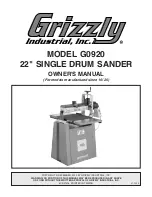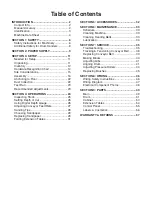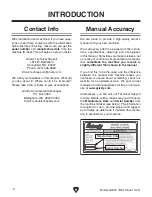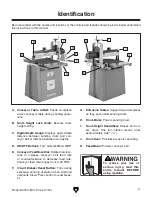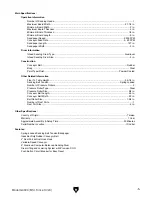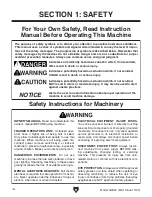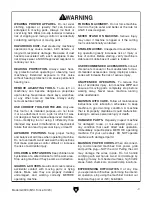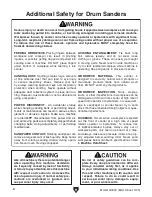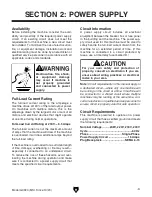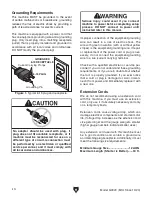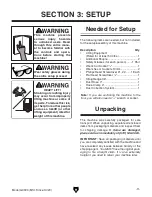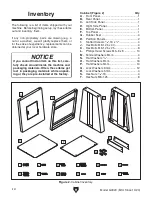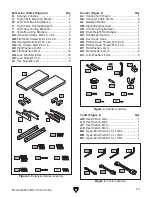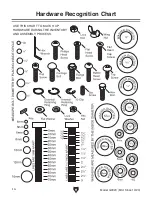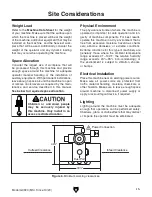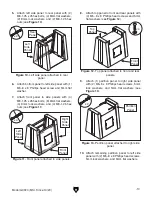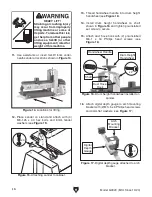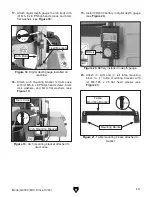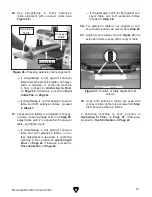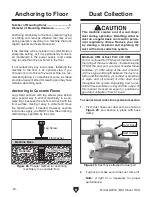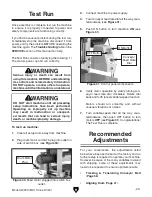
-8-
Model G0920 (Mfd. Since 10/20)
Additional Safety for Drum Sanders
Serious injury or death can occur from getting hands trapped between workpiece and conveyor
table and being pulled into machine, or becoming entangled in rotating parts inside machine.
Workpieces thrown by sander can strike nearby operator or bystanders with significant force.
Long-term respiratory damage can occur from using sander without proper use of a respirator.
To reduce the risk of these hazards, operator and bystanders MUST completely heed the
hazards and warnings below.
AVOIDING ENTANGLEMENT. Tie back long
hair, remove jewelry, and do not wear loose
clothing or gloves. These can easily get caught
in moving parts. Never reach inside machine or
try to clear jammed workpiece while machine is
operating. Keep all guards in place and secure.
WORKPIECE MATERIAL. This sander is
designed to sand only natural wood products or
man-made products made from natural wood
fiber. DO NOT sand any metal products.
WORKPIECE INSPECTION. Nails, staples,
knots, or other imperfections in workpiece can be
dislodged and thrown from sander at high rate of
speed into operator or bystanders, or cause dam-
age to sandpaper or sander. Never try to sand
stock that has embedded foreign objects or ques-
tionable imperfections.
KICKBACK. Occurs when a workpiece is ejected
out the front of sander at a high rate of speed
toward operator or bystanders. To reduce risk
of kickback-related injuries, always stay out of
workpiece path, only feed one board at a time,
and always make sure pressure rollers are prop-
erly adjusted below sanding roller. Never sand
workpieces below minimum specifications listed
in
Machine Data Sheet.
FEEDING WORKPIECE. Placing fingers between
workpiece and conveyor can result in pinching
injuries, or possibly getting trapped and pulled into
sanding area of machine. DO NOT place fingers
under bottom of workpiece while feeding it into
sander.
SANDING DUST. Sanding creates large amounts
of fine airborne dust that can lead to eye injury
or serious respiratory illness. Reduce your risk
by always wearing approved eye and respiratory
protection when sanding. Never
operate without
adequate dust collection system in place and run-
ning. However, dust collection is not a substitute for
using a respirator.
POWER DISCONNECT. An accidental startup
while changing sanding belts or performing adjust-
ments or maintenance can result in serious entan-
glement or abrasion injuries. Make sure machine
is turned
OFF, disconnected from power and air,
and all moving parts are completely stopped before
changing belts, doing adjustments, or performing
maintenance.
SANDPAPER CONTACT. Rotating sandpaper can
remove a large amount of flesh quickly. Keep hands
away from rotating sanding drum(s) during opera-
tion. Never touch moving sandpaper.
Like all machinery there is potential danger
when operating this machine. Accidents
are frequently caused by lack of familiarity
or failure to pay attention. Use this machine
with respect and caution to decrease the
risk of operator injury. If normal safety pre-
cautions are overlooked or ignored, seri-
ous personal injury may occur.
No list of safety guidelines can be com-
plete. Every shop environment is different.
Always consider safety first, as it applies
to your individual working conditions. Use
this and other machinery with caution and
respect. Failure to do so could result in
serious personal injury, damage to equip-
ment, or poor work results.
Summary of Contents for G0920
Page 60: ......

